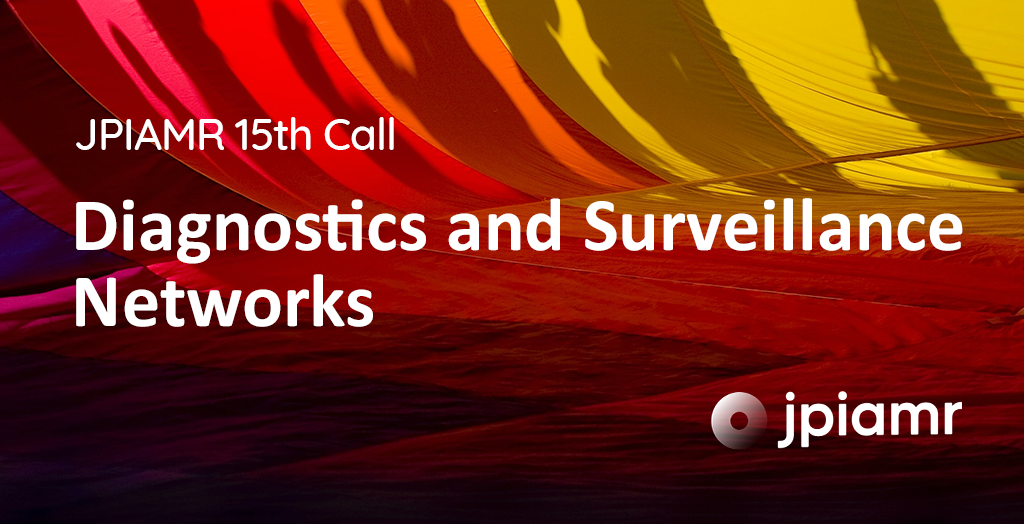JPIAMR is launching a transnational network call under the umbrella of the JPIAMR and within the framework of the ERA-NET JPIAMR-ACTION. The call Diagnostics and Surveillance Networks involves funding organisations from 11 countries to date. Networks can be funded with a maximum of 50,000 Euro each.

This call is closed
The aim of this call is to assemble networks of leading experts and stakeholders with an intent to facilitate the development, optimisation and use of diagnostic and surveillance tools, technologies and systems. Networks should work towards the conceptualisation of ideas in order to provide white papers, guidance documents and/or best practices/roadmaps and evidence frameworks to identify key questions to be addressed and/or potential solutions to overcome barriers to enhanced surveillance and advanced diagnostics to reduce the burden of AMR.
Networks should connect experts from research performing organisations and/or establish clusters with different relevant stakeholders and end users in the AMR community. Networks may build upon new or existing global collaborations/partnerships.
Eleven (11) JPIAMR-ACTION members are participating in this network call. Each network coordinator will be able to apply for a maximum of 50,000 Euro for 12 or 24 months period for support of its activities. The total budget of the call is approximately 1 M Euro.
Please note that JPIAMR network calls do not fund research projects.
Topic of the call
Networks should design and implement ways to support AMR research considering at least one of the two JPIAMR Strategic Research and Innovation Agenda (SRIA) priority topics Diagnostics and Surveillance.
Networks should also aim to address one or more of the following topics:
- Identify actions that will improve the diagnostics and surveillance of AMR (in humans and/or animals and/or agriculture and the environment).
- Identify actions needed to support the development of new tools, technologies and systems for diagnosis and surveillance.
- Identify novel or existing data platforms that can be developed or improved to aid international alignment and support the use of surveillance data and/or diagnostics to improve prescription of narrow-spectrum antimicrobials and support alignment with stewardship programmes.
- Identify or assess user needs for tools, technologies, or systems for diagnostics and/or surveillance in appropriate One Health settings.
- Identify the data collection needed to understand inequality in access to diagnostics and how socio-economic factors contribute to this inequality.
- Extend or continue activities of previously funded JPIAMR networks within Surveillance.
Eligibility
Network should consist of a minimum of fifteen (15) partners (including coordinator) from at least ten (10) different countries. In addition, at least three (3) of the partners must come from three (3) different countries whose funding agencies are participating in the call. A network must include at least three (3) early career researchers.
Networks are encouraged to consider gender and geographical diversity among partners.
Information & application
- Call text (pdf 1 MB). All specific information on the call “Diagnostics and Surveillance Networks”.
- Proposal application form (Word file 0,1 MB). The application form must be attached to the application in the submission platform.
- Submission platform. The proposal must be submitted by the coordinator before 14 June 2022, 14h CEST using the electronic submission platform.
Please contact the call secretariat if you have any questions about the call: jpiamr2022ncs@lmt.lt
Webinar for applicants
A live webinar for applicants was held on the 25th of April 2022 presenting the call and the partner search tool. Representatives from funders participating in the call were available to answer questions.
The webinar was recorded and the videos are now available on the JPIAMR YouTube channel:
Questions and Answers:
- Selection of Q&As from the webinar (pdf 0,1 MB)
Partner search tool
A match-making tool has been created for applicants to facilitate creation of networks. The tool can be used for:
- Partner looking for the network: an individual searching for a network to join.
- Network looking for partners: when somebody wants to build a network of experts for the implementation of a particular idea.
Partner search tool for the call Diagnostics and Surveillance Networks
Timeline
12 April 2022 (11.00) – Call opens
25 April 2022 (13.00 CEST) – Webinar for applicants
14 June 2022 (14.00 CEST) – Proposal deadline
Previous JPIAMR network calls
Learn more on the previous JPIAMR network calls:
- JPIAMR Network Plus (2020)
- JPIAMR-VRI Network Call (2018)
- JPIAMR Network Call on Surveillance (2018)
- AMR Networks/Working groups (2016)
Funders
Estonia
Estonian Research Council (ETAg)
France
Agence Nationale de la Recherche (ANR)
Italy
Ministero della Salute (It-MoH)
Ireland
Health Research Board (HRB)
Lithuania
Research Council of Lithuania (RCL)
Moldova
Agentia Nationala Pentru Cercetare Si Dezvoltare (ANCD)
Netherlands
Zorgonderzoek Nederland Zon (ZonMw)
Norway
Research Council of Norway (RCN)
Spain
Instituto de Salud Carlos III (ISCIII)
Sweden
Swedish Research Council (SRC)
United Kingdom
Medical Research Council (UKRI/MRC)
Supported projects
Six networks have been recommended for funding within the JPIAMR 15th transnational call: “Diagnostics and Surveillance Networks”. The networks include 228 partners from 40 countries and the total funding amount was 300 000 € plus up to 100 000 € fort start-up and final joint workshops. Click on the titles in the list below to learn more on each network.

